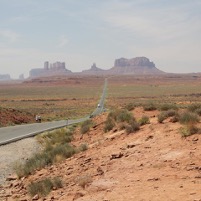Widgetized Section
Go to Admin » Appearance » Widgets » and move Gabfire Widget: Social into that MastheadOverlay zone
Public Administration, Public Lands and National Monuments
The views expressed are those of the author and do not necessarily reflect the views of ASPA as an organization.
By Tom R. Hulst
June 9, 2025

In a February 2025 article in the PA TIMES, titled Public Administration, Public Goods and Environmental Rehabilitation, I mentioned the need for the “public administration community to redouble efforts to clarify the value of investment in public goods at every level of government.” The public has a skewed view of public goods because they seem opaque and invisible. The piece recounted stories of the cleanup of contaminated lands through the EPA’s Superfund sites. This article continues to highlight the value of public goods and public lands—in this instance, national parks and national monuments.
The U.S. government owns and operates a variety of public lands, each serving a distinct purpose. In addition to national parks, the Bureau of Land Management (BLM) oversees vast areas used for recreation, grazing and resource extraction. National forests, managed by the U.S. Forest Service, provide timber resources, wildlife habitats and recreational opportunities. National wildlife refuges, under the U.S. Fish and Wildlife Service, protect ecosystems and endangered species. Additionally, wilderness areas, specifically created by Congress, remain largely untouched to preserve the character of their natural state. Finally, national monuments preserve sites of historical, cultural and scientific significance and are managed by various agencies.
National monuments have a rich and storied history in the United States. European Americans who moved into or traveled west of the Mississippi River in the 19th century generated public and scholarly interest in the “antiquities” they encountered. At the time, however, many people collected objects in random and indiscriminate ways and sold them for personal profit. Concern for the loss of historic artifacts galvanized a scientific and political coalition to enact a federal law to preserve America’s archeological places on public lands.
The Antiquities Act of 1906 was passed to ensure that important historical and archeological artifacts were not removed from federal lands. It stands as an important achievement in conservation and preservation efforts in the United States. The Act imposed penalties for unauthorized activities, such as excavation and removal of objects, and granted authority to the President of the United States to establish national monuments on existing federal lands. The Act created the basis for the federal government’s efforts to protect archeological sites from looting and vandalism. Because the Antiquities Act applied to all federal lands, an extraordinary record of America’s history has been preserved for the benefit of the public. Since passage of the Act, U.S. presidents have used their authority to set aside land almost 300 times. Many iconic lands of the National Park Service were first established under the Antiquities Act, such as Grand Canyon National Park (1908) and Acadia National Park (1916), protecting their archeological resources in the process. Other monuments were set aside specifically to protect their archeological resources, such as Chaco Culture National Historical Park (1907), Casa Grande National Monument (1918) and Hopewell Culture National Historical Park (1923).
The United States currently owns 138 national monuments, many of which are located in the continental U.S. These monuments protect areas of historical, cultural and scientific significance. Some well-known national monuments include:
- Devils Tower (Wyoming) – The first national monument, designated in 1906
- Statue of Liberty (New York) – A symbol of freedom and democracy
- Mount St. Helens Volcanic Monument (Washington) – Preserves the site of the famous 1980 eruption
- Canyon de Chelly (Arizona) – Home to ancient Native American cliff dwellings
- Bears Ears (Utah) – A culturally significant site for Indigenous tribes
This link (Facts and figures for national monuments) lists many of the national monuments and powerfully demonstrates the impact of the Antiquities Act on public lands as well as the preservation and protection of the archeological resources they contain.
The current administration has raised the threat level to public lands through executive orders that adversely impact wildlife refuges, national parks and national monuments. The administration has proposed a $900 million cut to the National Park Service budget, which would be the largest reduction in history. Additionally, thousands of park staff have been fired or pressured to resign, leaving parks understaffed and unprotected. Some safeguards for forests and wildlife habitats have been rolled back, allowing for increased logging and resource exploitation. Executive actions have also prioritized mineral extraction on public lands, which could lead to increased mining in national monuments. The orders affecting national monuments initially sought to eliminate protections for two monuments—Chuckwalla National Monument and Sáttítla Highlands National Monument—but were later revised to remove that action. Another order reopened parts of previously protected national monuments to commercial fishing.
The imminent threats to public lands posed by the administration’s orders constitute a national emergency. The public administration community can elevate its voice through newsletters, social media and news releases to highlight the important legacy of national parks, estuaries and monuments. The proposed actions of the administration merely satisfy the financial interests of a few. The loss of wildness, degradation of crystalline streams, exposed gullies and brutal scars disfiguring the landscape will be a “monument” not for the people but to the folly of a day when resources were viewed as mere entries on a corporate balance sheet.
Author: Tom R. Hulst received an MA in public administration from Washington State University. He served as policy advisor to Washington Governor Daniel J. Evans, administrator in the State Superintendent Office of Public Instruction and superintendent of Peninsula School District. He published The Footpaths of Justice William O. Douglas in 2004 and currently teaches political science at Tacoma Community College.


 (1 votes, average: 4.00 out of 5)
(1 votes, average: 4.00 out of 5)
Follow Us!